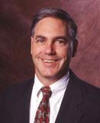February 2005
![]()
AutomatedBuildings.com
[an error occurred while processing this directive]
(Click Message to Learn More)
February 2005 |
[an error occurred while processing this directive] |
 EMAIL
INTERVIEW - Barry Haaser
& Ken Sinclair
EMAIL
INTERVIEW - Barry Haaser
& Ken Sinclair
Barry Haaser, Executive Director of LonMark® International
LonMark International is a global trade association consisting of companies that establish technical guidelines and promote open, interoperable products utilizing ANSI/EIA/CEA 709.1 and related standards.
Please send comments and questions to barry@lonmark.org
We will discuss the key trends driving open systems and provide key perspectives on how to make open systems a common element of your business, whether you are an end-user, contractor, specifier or supplier.
|
|
|
|
|
|
|
|
|
|
|
|
|
|
|
|
|
|
|
|
|
|
|
[an error occurred while processing this directive] |
Sinclair: Tell us about the workshop you are hosting at BuilConn.
Haaser: The LonWorks Workshop is designed to introduce people to the LonMark Open Systems model we introduced last year. Most people are familiar with the LonWorks platform, a widely adopted technology commonly used to automate systems used in commercial buildings. Unfortunately, few people are aware that many of the products and systems installed in their buildings use the LonWorks platform. Last year, LonMark International introduced the LonMark Open Systems model to extend the LonWorks platform into a standards based architecture. This model builds on our foundation of LonMark certified devices and controllers, the core element of open, interoperable systems. We feel that true open systems must support a completely open architecture; whereby every element of the system must be openly available from multiple suppliers.
Sinclair: What makes up a LonMark Open System?
Haaser: The LonMark Open System model operates under the principal that every element of a system should be completely open, whereby; any element of the system can be substituted with a comparable product from another supplier. Key elements of the system include devices and controllers; connectivity products such as network interfaces, routers, bridges and gateways; network management tools and software; a network database; web services support for enterprise connectivity; and the management interface. Tying it all together is the network or systems integrator.
Sinclair: It sounds like you are attempting to introduce interchangeability?
Haaser: That’s right. We take interchangeability for granted in our cars, computer systems, and consumer electronics. So, we are moving the building automation industry in the same direction by making every element of the system interchangeable. This will deliver tremendous financial benefits to the building automation industry. Facility professionals can significantly lower the cost of installing, maintaining and upgrading facilities. Contractors and integrators can garner new business through competitive support contracts and better serving their customer requirements for growth and expansion. Specifiers and consulting engineers can better serve their customers by providing more flexibility and lower cost solutions. Finally, suppliers can sell more products and protect margins through value-added software, support and services.
Sinclair: How receptive is the industry to this concept?
Haaser: We hear repeatedly from facility professionals about their desire to see this type of industry change and then express frustration that it is not available. Fortunately, many of the elements are supported today, only they are not standardized. There are countless installations around the world that operate on this interchangeable principal due to tight open systems specifications. Our goal is to increase awareness of open systems and help facility professionals, contractors, integrators, consulting engineers, specifiers and suppliers gain a better understanding of what they can do today.
[an error occurred while processing this directive] Sinclair: What do you think is holding people back?
Haaser: I am convinced that education and awareness is the key. There is a tremendous amount of fear and misinformation associated with open systems. Yet, open systems are installed in facilities every day. That is why we are hosting this workshop.
Sinclair: What are you going to cover in the workshop?
Haaser: We will discuss the key trends driving open systems and provide key perspectives on how to make open systems a common element of your business, whether you are an end-user, contractor, specifier or supplier. We will break-down the key elements of the system and discuss implementation strategies. We will explain how to write an open system specification. We will tell contractors how to get into the integration business. Finally, we will address implementation and IP connectivity.
Sinclair: Who should attend the workshop?
Haaser: We offer valuable information for everyone. Facility professionals can gain insight into the open systems movement and see how we can eliminate the risk and reduce operating costs. Contractors and systems integrators can learn about open system architectures and implementation. Specifiers and consulting engineers can learn about writing solid specifications. Finally, suppliers can learn about emerging opportunities in the open systems model.
Interested in learning more about this track at BuilConn? Click here.
[an error occurred while processing this directive]
[Click Banner To Learn More]
[Home Page] [The Automator] [About] [Subscribe ] [Contact Us]